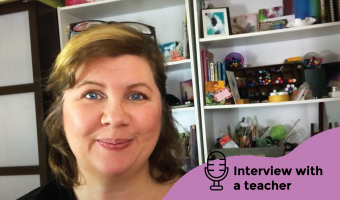There are several types of learners. It is extremely important to know your learning type, as it allows you to discover the way in which you will best learn and retain the information which you wish to remember. This means that when you are learning new things, trying new hobbies and adding to your skills you will be able to learn in the most effective manner.
Do you know which learning type you are? Keep reading and find out!
There are three types of learners that are undisputed and mentioned by most articles. These are part of the VAK model of learning, which was developed by psychologists in the 1920s to help students and learners ascertain the way in which they learn best.
Are you a visual, auditory or a kinesthetic learner?
Visual learners – the power of images
Visual learners prefer to see information and will remember content through sight. When learning, studying and revising, they like to use colors and display the learning materials in a variety of different ways. They tend to learn and retain information best when using charts, diagrams, colorful images. This is the most effective way for them to understand the numerous relationships between the facts, topics and content.
Visual learners are usually:
- Good at reading maps
- Neat and tidy
- Making plans and decisions by writing lists
- People with a wild imagination
- People who daydream
- Those who enjoy fashion, TV, art, technology
- The ones who take lots of notes in class

Auditory learners – sounds are the key
Auditory learners learn best through listening and speaking. They tend to readily engage with the teacher in class or online tutoring lessons and will often ask questions. When revising they read aloud the information and also like to have a study buddy, so that they can test and speak to each other, as they learn best through sound and speech.
Auditory learners are usually:
- Good storytellers
- Good at following verbal instructions rather than written instructions
- Skilled at oral presentations or reports
- Very engaged in the classroom or online learning environment
- Likely to enjoy music
- Likely to talk to themselves
- Unable to concentrate in a noisy environment
Kinesthetic learners – a vital role of movement
Kinesthetic learners learn best through hands on, active learning activities. Standing up, moving around the room, role playing, making models or interactive tasks are the most effective ways of learning for a kinesthetic learner. They can also use all of the senses to learn including smell and touch. They like to be actively engaged in their learning.
Kinesthetic learners are usually:
- Always moving- they bounce their legs, tap their fingers and fidget
- Gifted in physical activities and sport
- Very coordinated
- Those who lose interest quickly
- People who enjoy making things with their hands
- Those who use many hand gestures when they talk
- Expressive in nature
After thousands of hours of classroom observation and questionnaires another learning style was added to a new model of learning styles known as the VARK model. These four types of learning (visual, auditory, reading/ writing and kinesthetic) were identified by Neil Fleming and Coleen Mills in their 1992 study. This allowed learners to further understand the best and most effective way in which they study and retain information that they need to learn.
Reading/ Writing learners – reap the benefits of using letters
These learners enjoy taking notes, rewriting information in different formats and learning from textbooks. They enjoy learning through words. Bullet point lists, headings, handouts, textbook readings and essays all help them to learn in the most effective way. They also like to use quotations and highlight parts of a text. If you prefer to read on your own rather than have someone else read to you, you may be a reading/ writing learner.

Reading/ writing learners are usually:
- Those who enjoy reading in their free time
- Most productive in a quiet study environment
- Those who enjoy taking exhaustive notes
- Skilled at writing essays
- Those who best improve from written feedback
The types of learners do not end there. Other models claim that there are an additional four learning styles. These are known as the verbal learner, the logical and mathematical learner, the social and interpersonal learner and the solitary and intrapersonal learner. However there is not such a large quantity of ratified information about these types of learners. Therefore, the most common models of learning that are recognized in education are the four described in depth above.
Now that you know more about the four learning styles, you can alter your study time to incorporate methods which will best allow you to learn new skills and educational content.
Visual learners – start putting post-it notes up on your mirrors and walls.
Auditory learners – watch new videos on the topic you are learning about or even create a song.
Kinesthetic learners – start role-playing with your family and friends to retain information.
Writing learners – well, surround yourself with books… and create as many lists, highlighted handouts and essays as you wish.
But, there’s a twist.
How can you incorporate different learning styles into your daily routine?
Some individuals such as Daniel Willingham believe that learning styles do not exist at all and may even impede learning. Willingham states that learners tend to complete tasks with their learning style in mind (visual learners use pictures, auditory learners use sound etc) but this did not actually help them in any way. He asserts that visual learners would not remember a picture any better than an individual with another learning type. The model of learning styles is also criticized due to its outdated nature.
Therefore, whilst incorporating the type of learning techniques you believe keep you engaged and learning effectively, it is essential to ensure that you are learning actively, using multimodal materials and engaging with the learning content. So don’t force yourself to use only one type of learning because you believe it suits you the most. Try out new things and techniques, you may even be surprised to learn that other types of learning are beneficial as well.

All types of learners benefit from video learning
Due to the advancement of tech and newest scientific findings, it has been discovered that there are a few things that can maximize your learning regardless of your learning style.
One of these findings is the use of video materials which can engage students a lot more than any traditional method of learning. This is why online learning platforms have been gaining popularity for years now.
However, not every online learning platform is the same as well as not every video lesson will have the same impact on students. Long, tedious courses that require months of learning are no longer popular. People across the world want to learn something new every day. Whether it is a sewing or drawing class, learners no longer want to spend hours learning.

InfoDepot was created by having this in mind – it is a platform that will cater to the needs of contemporary students of all ages. InfoDepot offers online video classes for learners to purchase and rewatch which are often short in duration and include games or interesting formats to present the learning material. As a result, video classes encourage active learning as the student is not merely passively absorbing information, but engaging with the material.
Teachers can also provide video links, worksheets and book chapters to accompany their lessons for further learning, which facilitates multimodal learning, ensuring that students learn knowledge in a variety of formats.
So whilst discerning your learning style is great, why not engage all of your senses and try this new type of learning. Take advantage of the inevitable shift to technology and start your e-learning journey today.





Comments